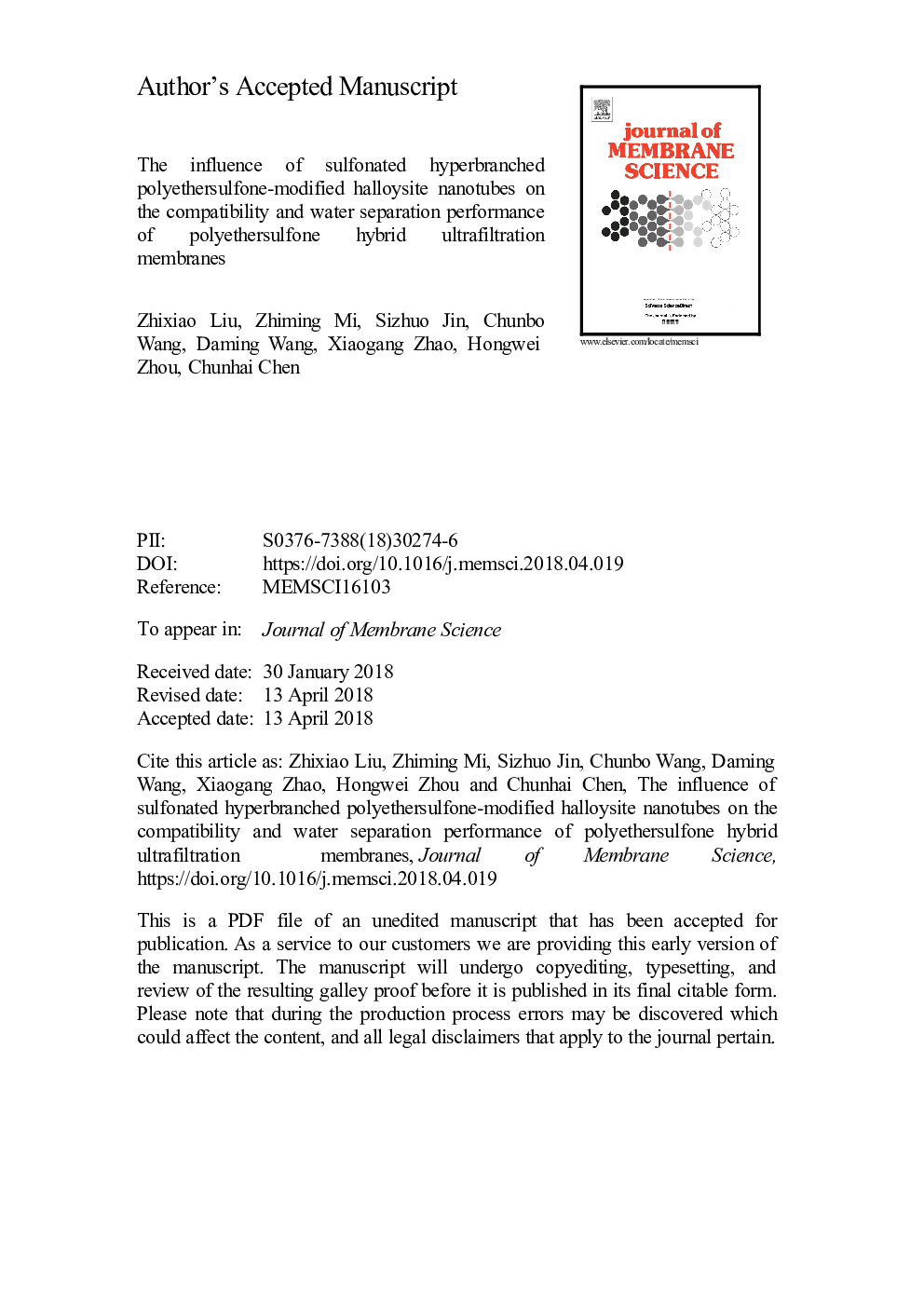| Article ID | Journal | Published Year | Pages | File Type |
|---|---|---|---|---|
| 7019836 | Journal of Membrane Science | 2018 | 32 Pages |
Abstract
Sulfonated hyperbranched polyethersulfone (SHBPES)-modified halloysite nanotubes (HNTs), HNT-SHBPES, were synthesized and mixed with polyethersulfone (PES) to prepare hybrid ultrafiltration (UF) membranes via the phase inversion method. Pure PES and PES hybrid membranes mixed with SHBPES and HNTs were also prepared. The HNT-SHBPES showed good compatibility with the PES membrane matrix, and a series of PES/HNT-SHBPES hybrid membranes offered improved porosity, surface mean pore size, hydrophilicity, permeability, and anti-fouling properties. These were mainly attributed to the synergistic effects of hydrophilic -SO3H of SHBPES, porous HNTs, and the tiny interspace between HNT-SHBPES and PES matrix. When 8% HNT-SHBPES was doped into PES casting solution (MHS-8), its pure water flux reached 351.6â¯L/m2 h-this was nearly 2.2 times that of the pure PES membrane (M-0); its rejection rate remained high primarily due to the occurrence of delayed phase separation in the solidification process and the good compatibility between HNT-SHBPES and PES matrix. This resulted in a relatively dense, uniform, and defect-free surface. Additionally, bovine serum albumin (BSA) and humic acid (HA) were chosen as model contaminants to evaluate the anti-fouling properties of all prepared membranes. After multi-cycles UF experiments, MHS-8 retained a higher flux recovery rate and rejection rate than the other membranes confirming its excellent anti-fouling properties and stable overall performance. This work offers a new possibility for hyperbranched polymer-modified nanomaterials to enhance their compatibility with membrane matrix and improve membrane separation performance.
Keywords
Related Topics
Physical Sciences and Engineering
Chemical Engineering
Filtration and Separation
Authors
Zhixiao Liu, Zhiming Mi, Sizhuo Jin, Chunbo Wang, Daming Wang, Xiaogang Zhao, Hongwei Zhou, Chunhai Chen,
